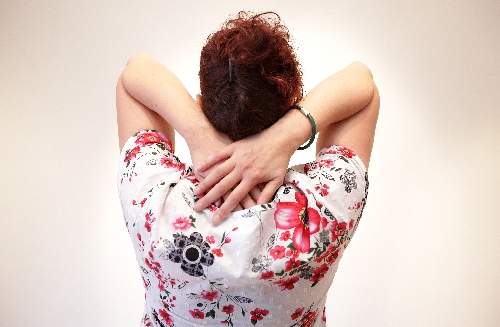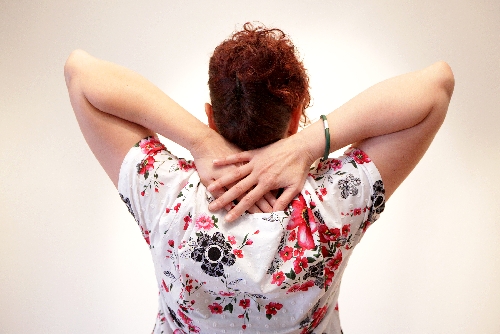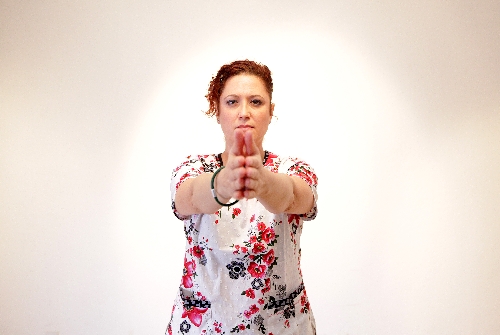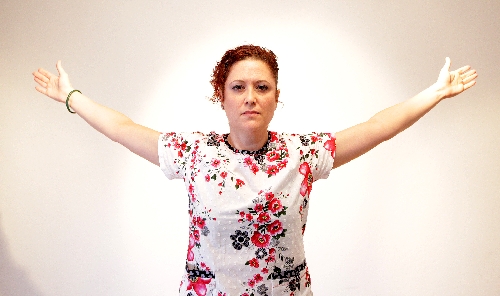Avoid the fast track to slouch city by stretching your chest




Last week, I started a three-column series on back pain featuring Brigitte Papp, a Las Vegas massage therapist specializing in orthopedic massage.
Today we dive into the upper back.
Brigitte often works on clients with problems in their upper back and neck. Most upper back pain can be categorized as muscle imbalance. Specifically, the chest is tight and the back is weak. This means the chest muscles are shorter and knotted from being stronger than the muscles of the back. Conversely, the back muscles are weaker and longer than normal from being continually stretched.
Upper body posture also can be affected by imbalanced chest and back muscles. Because the attachment site of the pectoral muscles is in the top of the humerus (arm bone), it rotates the shoulder forward when they become tight.
When progressed, the imbalance can lead to forward head syndrome. This is observed by the head appearing to be forward from its normal position when viewed from the side. Combine that with slouching and you have the makings for a perfect muscular storm with pain at its center.
Upper back and neck pain in such situations comes from the muscles of the back being overstretched. Brigitte uses the analogy of a bedsheet being pulled at each end until it rips. The bed sheet represents your upper back muscles. Ouch!
I know what you’re thinking. "I don’t want my upper back to tear like an overstretched bedsheet. What causes the chest muscles to get tight in the first place?" Unbalanced weight training is one cause. Heavy chest training followed by little or no back work can put you on the fast track to slouch city. Another culprit is the infamous desk job that has you slouch over a computer all day. Accomplices can be holding heavy bags on one shoulder and incorrectly learned posture. Stress and depression are also reasons to slouch and can further the muscle imbalance.
The strategy for correcting muscle imbalances is to relax the tight side and strengthen the weak side. Today’s movements are chest stretches. You can strengthen your back using some of my earlier columns. (See www.lvrj.com/trainer. Click on one of the years under archives to find previous articles.) The pectoralis major are the large chest muscles you can see when flexed. Under those are the pectoralis minor. Stretching them can help bring the front and back of your upper torso into balance.
If these stretches don’t help decrease your upper back pain, you might have other issues to consider. See a massage therapist to help you understand how your body is held together and what things you can do to be pain-free and posture-perfect.
Feel free to use these stretches as pre-hab to avoid muscle imbalance. My favorite is the pec minor stretch. I have a tendency to be tight there and have to stay on top of my flexibility. Be sure to check out the videos online for a more detailed walk-through of these stretches.
Chris Huth is a Las Vegas trainer. He can be reached at 702trainer@gmail.com. Brigitte Papp is a massage therapist specializing in orthopedic massage. She can be reached at bwellness.papp13@gmail.com. Consult your physician before beginning any exercise program.












